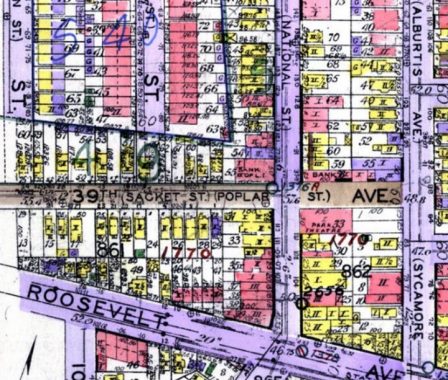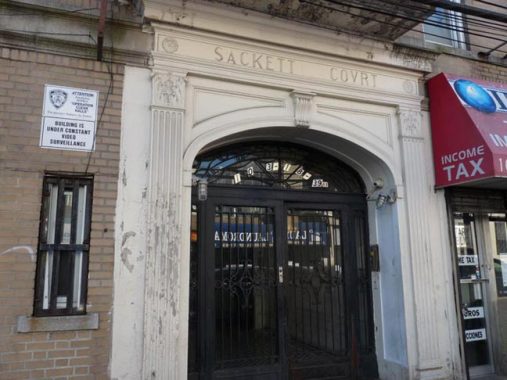While stumbling around Corona today, I was looking for odd bits of infrastructure that pointed the way to the past. They’re not hard to find because Corona is a rather elderly neighborhood. Ground was broken for the Flushing Railroad (now part of the LIRR Port Washington Branch) in 1853. This event would spark the transformation of the sleepy settlement into a bustling commercial, industrial and residential center. A real estate company was organized in Manhattan to create “West Flushing,” a name which wouldn’t last long. The West Flushing Land Company engineered the first of two major phases of development by selling houses on small plots carved out of former farmland.
West Flushing’s second phase of development was the responsibility of Benjamin Hitchcock, who also developed Woodside at the same time. He bought 1,200 West Flushing lots in 1867 and sold them in 1870. He offered installment payments to his less wealthy customers, which was a novel idea at the time, and one which they found very attractive.
Resident Thomas Waite Howard discovered that his town’s name was confusing to outsiders and even to the post office. In 1868, he petitioned the post office to change West Flushing’s name to ‘Corona’ as he felt that his neighborhood was the “crown jewel” of Long Island. The post office granted his request in 1872.
Shuffling down 39th Avenue, I spotted an apartment building at #103-18 called Sackett Covrt, Court spelled with the V of Importance. (In ancient Rome, there was no letter V — that came along centuries later — but stonecarvers rendered the U with a point, like our V of today, since it was easier that way.)
Now, apartment buildings are often named for the streets they were built on — and keep their names after the original name was changed. Was that the case here?

A Belcher Hyde atlas excerpt from 1927 has the answer. Corona was in flux then, with a number of streets not yet built or paved. The atlas shows all the recent street names of the area, with the latest being the number: 39th Avenue. However we can see that it had also been called Poplar Street (Corona streets once carried plant names) and, sure enough, Sacket Street, without the extra T; I suspect it was there all along.
